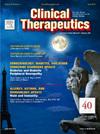不同年龄组儿童输尿管远端狭窄球囊扩张的长期疗效。
IF 3.6
4区 医学
Q2 PHARMACOLOGY & PHARMACY
引用次数: 0
摘要
目的:治疗原发性梗阻性输尿管的金标准是输尿管再植术,但对于1岁以下患者是否使用输尿管再植术仍有争议。在大多数原发性梗阻性输尿管病例中,输尿管造口术优于肾盂造口术和肾造口术。另一种替代方法是输尿管反流再植术。球囊扩张术在输尿管狭窄的成人患者中是有效和安全的,可能为儿科患者提供另一种选择。本研究旨在评估不同年龄组儿童输尿管远端段狭窄患者球囊扩张的术前和术后参数,并确定影响治疗成功的独立参数。方法:新生儿(0 ~ 28天)病历;N = 19),年幼婴儿(年龄28天至6个月;N = 29)和儿童(年龄,6个月至11岁;分析纳入2020年12月8日至2023年11月5日在中国广州广东省妇幼医院就诊的输尿管远端段狭窄行球囊扩张术(球囊尺寸8 ~ 10.5 F)的汉族儿童患者(n = 29)。结果:输尿管远端段狭窄的患病率男性高于女性(58比19),且男孩和女孩左侧均高于右侧或两侧(P = 0.0375)。输尿管远端段狭窄球囊扩张的治疗效果在所有年龄组均有效(均P < 0.05),特别是在新生儿中更有效,其次是婴幼儿和儿童,盆腔前后直径、肾实质厚度(最薄点)、输尿管直径(最宽点)和尿白细胞(均P < 0.05)。球囊扩张治疗效果与年龄(P = 0.0412)、肾积水(P = 0.0481)、肾皮质厚度(P = 0.0419)、输尿管扩张(P = 0.0491)相关。意义:这些发现表明球囊扩张可能为年轻患者,特别是新生儿输尿管远端段狭窄提供了一种可管理的替代方案,年龄和特定的解剖学因素会影响结果。年龄、肾积水、肾皮质厚度和输尿管扩张是非常年轻患者球囊扩张治疗效果的独立参数。本文章由计算机程序翻译,如有差异,请以英文原文为准。
Long-Term Outcomes of Balloon Dilation in Pediatric Distal Ureteral Stenosis Across Age Groups
Purposes
The gold standard for treating primary obstructive megaureter is ureteral reimplantation, with ongoing debate surrounding its use in patients under 1 year of age. In most primary obstructive megaureter cases requiring urinary diversion, ureterostomy is favored over pyelostomy and nephrostomy. Another described alternative would be the refluxing ureteral reimplantation. Balloon dilation, established as effective and safe in adults with ureteral strictures, may offer an alternative for pediatric patients. This study aims to evaluate pre- and postoperative parameters of balloon dilation in distal ureteral segment stenosis among pediatric patients across age groups and to identify independent parameters influencing treatment success.
Methods
The medical records of newborns (age, 0–28 days; n = 19), young infants (age, 28 days to 6 months; n = 29), and children (age, 6 months to 11 years; n = 29) of Han Chinese pediatric patients from the Guangdong Women and Children Hospital, Guangzhou, China, from December 8, 2020, to November 5, 2023, with distal ureteral segment stenosis who underwent balloon dilatation (size from 8 to 10.5 F) were included in the analysis.
Findings
The prevalence of distal ureteral segment stenosis is higher in males than females (58 vs 19) and that was higher on the left lateral side in both boys and girls than right or both lateral sides (P = 0.0375). The therapeutic effect of balloon dilation in distal ureteral segment stenosis is effective across all age groups (P < 0.05 for all) and especially reported to be more effective in newborns, followed by young infants and children regarding anterior and posterior pelvic diameter, renal parenchymal thickness (thinnest point), ureter diameter (widest point), and urine white blood cells (P < 0.05 for all). The treatment effect of balloon dilation correlated with age (P = 0.0412), hydronephrosis (P = 0.0481), renal cortical thickness (P = 0.0419), and ureteral dilation (P = 0.0491).
Implications
These findings suggest that balloon dilation may offer a manageable alternative for younger patients, especially newborns for distal ureteral segment stenosis, with age and specific anatomical factors influencing outcomes. Age, hydronephrosis, renal cortical thickness, and ureteral dilation were independent parameters for the treatment effect of balloon dilation in very young patients.
求助全文
通过发布文献求助,成功后即可免费获取论文全文。
去求助
来源期刊

Clinical therapeutics
医学-药学
CiteScore
6.00
自引率
3.10%
发文量
154
审稿时长
9 weeks
期刊介绍:
Clinical Therapeutics provides peer-reviewed, rapid publication of recent developments in drug and other therapies as well as in diagnostics, pharmacoeconomics, health policy, treatment outcomes, and innovations in drug and biologics research. In addition Clinical Therapeutics features updates on specific topics collated by expert Topic Editors. Clinical Therapeutics is read by a large international audience of scientists and clinicians in a variety of research, academic, and clinical practice settings. Articles are indexed by all major biomedical abstracting databases.
 求助内容:
求助内容: 应助结果提醒方式:
应助结果提醒方式:


